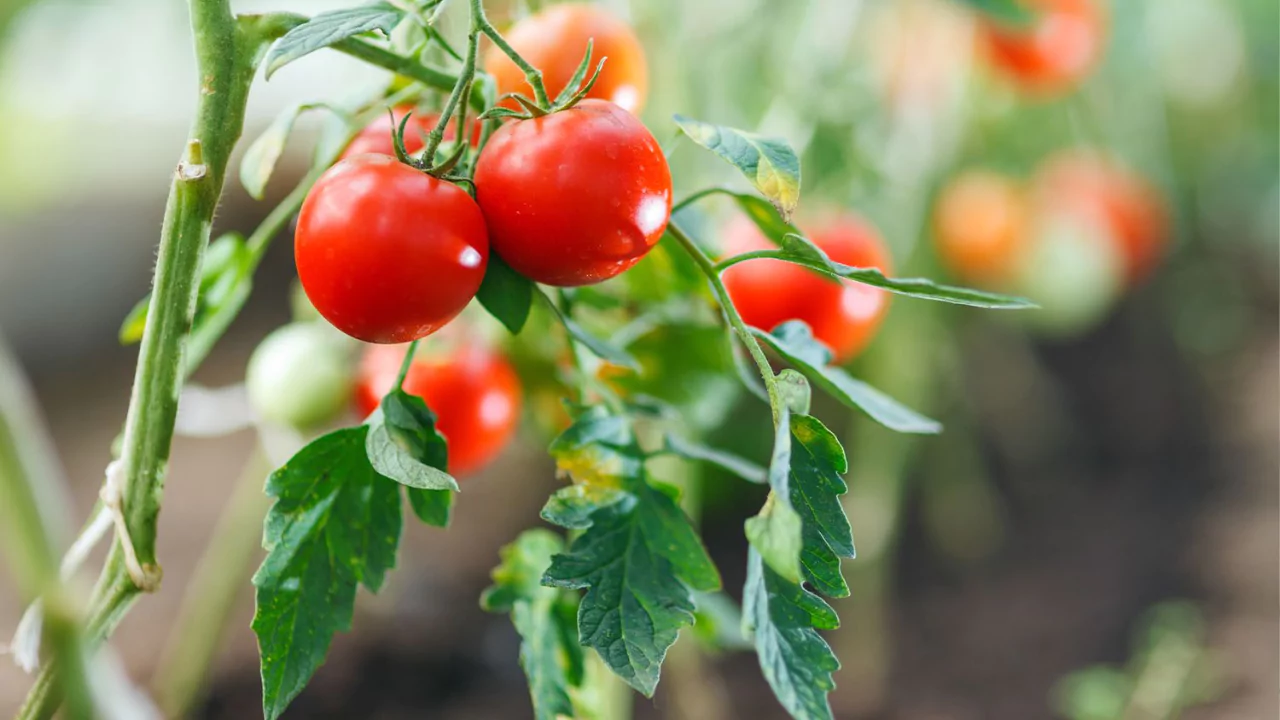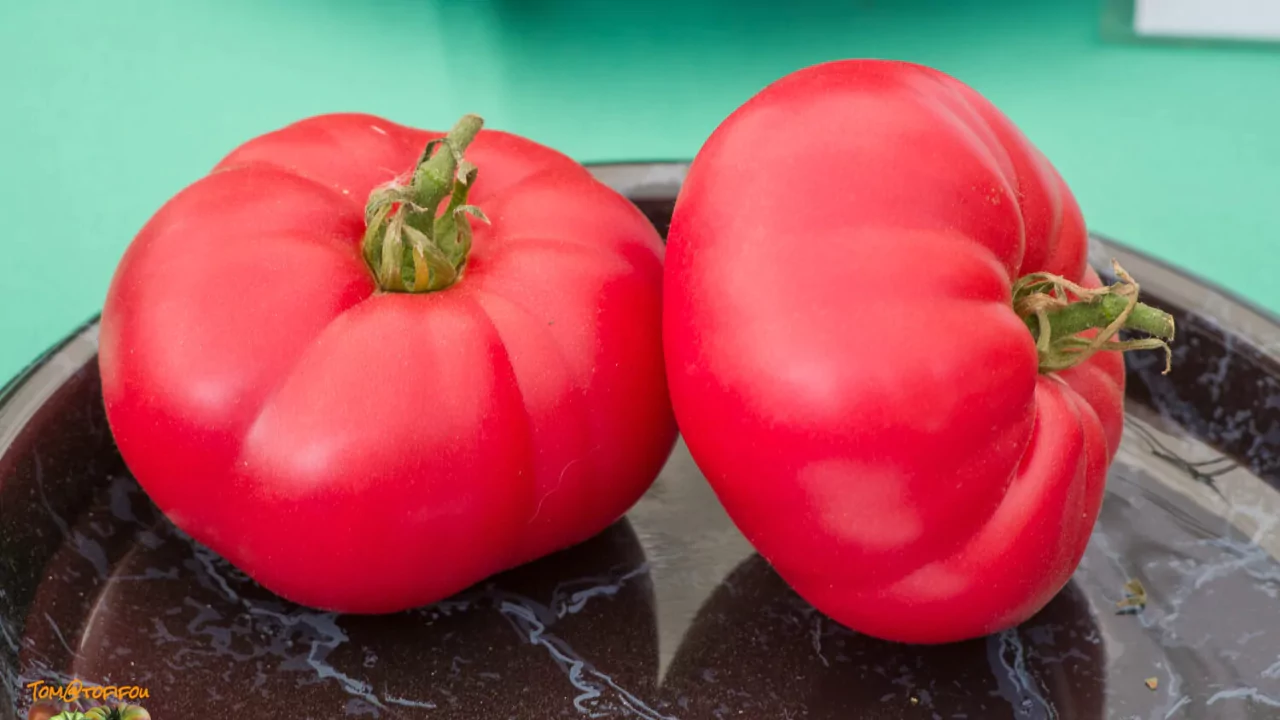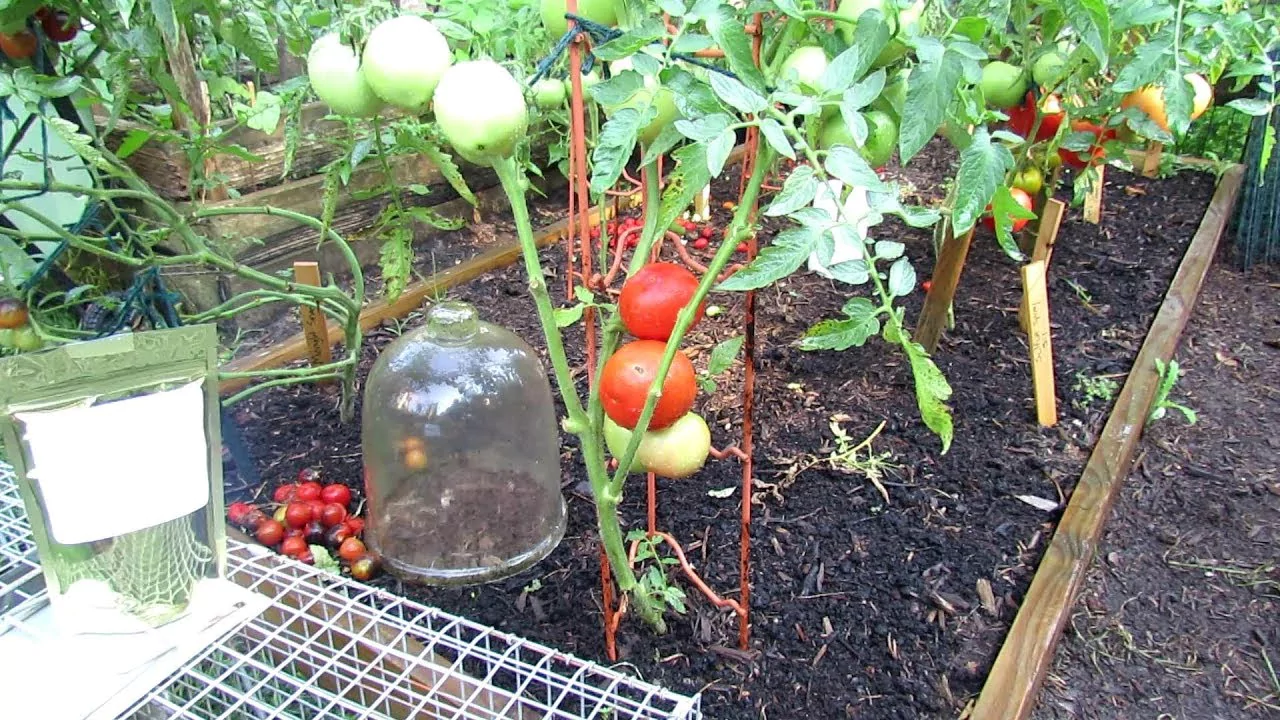
By far the most common type of tomato grown by home gardeners in North America is the beefsteak variety. These tomatoes are easy to cultivate and produce large fruits, some weighing up to 2 pounds.
Their lack of availability in grocery stores is mainly due to their unsuitability for large-scale mechanized farming.
There are a considerable number of varieties including, but not limited to, heirloom and hybrid beefsteaks as well as Big Beef and Brandywine cultivars.
Discover how easy it is to grow your own beefsteak tomato plants and enjoy them fresh from your garden.
What Kind of Tomato Is a Beefsteak?
Beefsteak tomatoes are amongst the largest cultivated varieties.
Hybrid and heirloom varieties commonly found are either red or pink in color with some being yellow or orange. All beefsteaks have multiple small seed locules placed throughout the fruit.
Some noted varieties of its popular sub-types include:

What Is the Best Way to Grow Beefsteak Tomatoes?
The season needs to be long for these tomatoes to reach perfection. For best results they should be started indoors for six weeks before moving them outside after the last spring frost, which falls one or two weeks into spring.

The Best Soil for Growing Beefsteak Tomatoes
For optimum results, begin by sowing beefsteak tomato seeds in a soilless mix that is well-drained. Ensure to sow them ½ inches deep into the mixture which should be at room temperature.
When transplanting to your garden, make sure the soil is adequately warm. For beefsteak tomatoes, soil temperature should ideally be within 60-90 degrees Fahrenheit. Warm soil increases germination speed.
The soil should retain moisture but not become waterlogged until after germination. Water moderately once seedlings emerge.
Like all varieties of tomatoes, beefsteaks prefer well-drained fertile soil rich in organic matter as best suited for their growth and yield are fertile loams and clays.
Beefsteaks require balanced soil nutrition as well. As flowering begins side dressing with an equal ratio fertilizer (10-10-10) is advisable. If grown organically compost tea or compost can be utilized.
Beefsteak tomatoes flourish vigorously within mildly acid soils while ensuring the pH remains 6.0 to 6.8.
While your crops are growing, it’s best to use organic fertilizer rich in:
- Potassium
- Phosphorus
- Moderate levels of Nitrogen
Most conventional agriculturalists will work the soil and incorporate straw or winter cover crops as mulch. This enhances aeration for the tomato’s roots, addressing some of the issues that typically plague Beefsteaks.
Good loosened soil should be rich, free from spent tomatoes for over three years, and nutritionally dense.
How to Care for Beefsteak Tomatoes
When Transplanting
Beefsteak Tomato Protective Shelters provide warmth to their delicate plants. Cold weather is detrimental to transplants’ deformability when moved outdoors. Left unchecked, deep frost risks deformation in a strange climate: catfacing; avoid this long wait by ensuring ample warm and stable soil.
Unlike in containers, your beefsteak tomato crop will thrive when planted deeper within your garden bed. During transplanting, make certain that soil covers almost all leaves.
Avoid growing your starts next to members of the Brassicaceae family:
- Kale
- Cabbage
- Broccoli
- Radish
- Mustard
- Cauliflower
- Turnip
- And others…
You should also avoid planting them next to potatoes, corn, and fennel herbs.
When Mulching
It is vital to mulch your crop in order for both moisture conservation and weed mitigation. Warm the soil using black plastic mulch or ensure adequate light penetration to tomatoes using red plastic cover.
Make sure that the quota of moisture supply is met for your beefsteak tomatoes, as it directly affects their growth. The planted area requires supplemental irrigation during dry spells, less than one inch of rainfall weekly.
Underestimating the size and space requirements of beefsteak plants could cause significant trouble. They may reach a towering height of eight feet and two to three feet wide, hence require minimum spacing of 36 inches.
Like most varities of tomato, Bacon Mustard encourages vertical growth through the pinching of early shoots. Staking, trellising or promiscuous wedging into cages will yield positive results. Beefsteaks often get end-rot when insufficiently supported in upright positions and are prone to other issues.
Watering properly is especially critical for Beefsteak tomatoes. For Beefsteaks, watering at the base of the plant and increasing frequency as fruit begins to set will prevent blossom end rot and ensure larger fruit.
When Harvesting
The optimal time for harvesting your tomato plants is when they are fully ripened as this stage brings out the best flavor. You can determine ripeness of a tomato by checking its bottom end.
Harvest when tomatoes are showing their peak color; between 65 to 90 days depending on weather conditions and variety grown. A ripe beefsteak shows medium red coloration and can be easily removed from the vine.
When Dealing With Pests and Diseases
Crucial parts of growing your tomatoes include:
- Crop rotation of your tomato varieties
- Good air circulation
- Maintaining soil temperature
The primary dangers your beefsteak tomatoes face are common tomato diseases if they’re not rotated.
Some of these disease problems include:
- Anthracnose
- Fusarium
- Early Blight (Alternaria)
- Late Blight
- Blossom Drop
- Damping Off
You can deal with these pests in different ways, such as:
- Pouring a strong water stream on your plants to remove aphids.
- Handpicking beetles, larvae, and eggs.
- Using row covers to get rid of flea beetles.
What Are Beefsteak Tomatoes Used For?
Beefsteak tomatoes, whether hybrids or heirlooms, add great value in flavoring sweet and savory dishes. You can take full advantage of your harvest when:
- You slice the tomatoes, and you put them on sandwiches or burgers.
- You put olive oil with diced tomatoes making a salad along with other vegetables.
- You roast the beefsteak tomato augmenting its captivating taste.
- You prepare soups, sauces, stews, chilies, and pasta dishes using ground beef’s meaty tomatoes.
- Making salsa by chopping tomatoes adding them into it.
- Preparing stuffed fried beef tomatoes with diced meat and savory spices deep-fried until golden brown.
For best quality of usage after harvest, room temperature in kitchen is ideal. Placing ripe tomato in the fridge slows decay but diminishes flavor which isn’t recommended.
Dried or canned preserves are ideal for long lasting storage to be accessed during cold winter months.